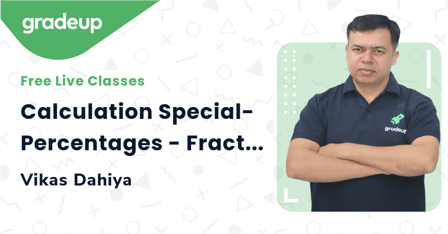Tips to Solve Circular Seating Arrangement (Blood Relation) Blood relation with seating arrangement: These are type of difficult sitting arrangement questions being asked in SBI-PO 2015 Mains & IBPS PO Mains 2015 Exam. An example is shown below:
A, B, C, D, E, F, G and H are sitting around a circular table. All are A’s relatives as: Brother, Brother-in-law, Sister, Sister-in-law, Mother, Father & Wife.
1. Neither A nor D sit with wife or mother.
2. A’s sister-in-law & sister sit opposite to each other.
3. H isn’t blood relative of A.
4. F sits 3rd to right of B.
5. Neither F nor H, who sits 2nd to left of A, is the wife of A.
6. E, the father sits 3rd to right of brother-in-law.
7. D sits opposite to G, a first generation female, who is not A’s neighbor.
What Exactly Goes Wrong?
Such questions become critical as they are really scoring if solved with correct strategy. But many people don’t attempt such seating arrangement as they can’t find the starting points and connecting dots for such questions.
Due to constraint of time, candidates opt to not to attempt question as they can be really time consuming if not attempted with correct strategy.






What Is Starting Point & How To Find It?
Starting point is important information in the question which, primarily, tells about the position of specific persons. Usually, the question starts with negative information which doesn’t tell the exact position. Remember, Negative information such as “Neither/Nor..” can only give relative positions so it can never be a starting point.
For example, in the example above, the starting point can be:
1. F sits 3rd to right of B.
2. H, who sits 2nd to left of A
Here, we will start with position of B. This gives us 4 possibilities:
3. E, the father sits 3rd to right of brother-in-law. ⇒ this creates 2 additional possibilities for 1st and 2nd:
So far, we’ve got 6 possibilities using Starting Points.
Let’s solve using Connecting Dots.
What are Connecting Dots?
Connecting dots are the little pieces of information in the question that tends to provide further arrangement based on the position of people already seated. Connecting dots in the question above:
1. D sits opposite to G, a first generation female, who is not A’s neighbor.
⇒ G is Mother as she belongs to 1st generation. ⇒ This will eliminate 2a) & 4) possibility and the remaining space is allotted to C. 3. No we know the position of Mother, so we’ll use the info connected with Mother.
3. No we know the position of Mother, so we’ll use the info connected with Mother.
Neither F nor H is the wife of A. Neither A nor D sit with wife or mother. ⇒ this eliminates possibility 2b) 4. A’s sister-in-law & sister sit opposite to each other. ⇒ This eliminates 1a) & 1b) possibilities as only 3) possibility has space for two people opposite to each other without any relation tag.
4. A’s sister-in-law & sister sit opposite to each other. ⇒ This eliminates 1a) & 1b) possibilities as only 3) possibility has space for two people opposite to each other without any relation tag.
H isn’t blood relative of A. ⇒ H is sister-in-law & F is sister while B is brother(only relation left).

Now we have got the sitting arrangement with properly using Starting Points and Connecting the dots.
Caution:
This can be a bit of time consuming with respect to amount of time we invest in drawing all the possibilities.
1. But if we practice enough and get the hang of how possibilities are made then such questions can easily solved within 7-10 minutes.
2. Always remember to make as many possibilities as possible because accuracy of such questions depends on your ability to imagine the possible positions of various people & striking the correct one in the end after all the conditions have been met.
3. Just keep practising the possibilities diagram & when you’ll get hang of it, such passages will become easier to solve.
4. Also, try to solve such complicated passages in the last 10-15 minutes after you’ve done all the easy & less-time-consuming part as these passages require un-divided attention which can only be given when we’re not under pressure





























0 Comments